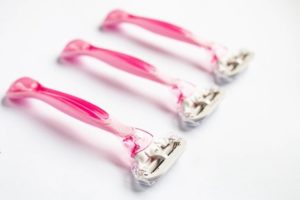Have you heard of the Pink Tax? The pink tax is a pricing difference between female products and male products. There is not an actual tax added onto these items, but when comparing the female version to the male version, the female version of equal or lesser quality, is more expensive. This happens with items including but not limited to razors, deodorant, skin care products, and clothing. According to Listen Money Matters, women pay more than men 42% of the time. This equals out to be $1,300 a year in extra cost!
To battle this tax, there have been subscription boxes created to try to fight the unfair price difference. A few examples of these boxes are Harry’s, Billie, and Boxed. These boxes provide quality products for the same price as men’s products. The Boxed subscription sells items in bulk and for a cheaper price than most retail stores, making them a great substitute for shopping in retail stores for personal care items. You can increase the amount that you receive or reduce the quantity if it begins to be too much. Care products aren’t the only thing subject to the Pink tax though.
In 2014, Old Navy was exposed for charging more for plus size women’s clothes than for men’s plus size clothes. Their defense was that women’s clothing has unique fabrics and design elements. Women’s plus size clothing cost anywhere from $10-$15 more where men’s plus size clothing was the same. Regardless of the reason, this can be seen as discrimination to women and we need to keep women aware of these price differences when they are shopping. Today, this price gap has decreased, but it is still a problem.
This has been a problem for decades and will continue to be a problem until we do something about it. To combat this problem, we need to collectively look at the products we are purchasing and compare them to the male product. Check to see if there are any real differences in the product besides the color or size. If these products are the same, buy the male product. Making more women educated about this issue can help reduce the number of women spending more money for the female product when it costs the same as the male. This could make an impact on the manufacture to lead them to lower prices on women’s items.
